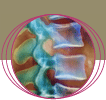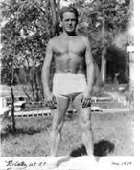




Not much is known about Joe’s early life except that he suffered ill-health and is known to have had asthma, rickets and rheumatic fever. He fought these setbacks by studying and practising a wide variety of sports, including calisthenics, boxing, skiing, gymnastics, yoga, fencing, swimming and diving.
He also studied how wild animals moved and children played and developed the main principles for his method from what he saw. He believed that all movement should be natural and balanced.

Joe found work as a boxer and circus performer, and taught self-defence to detectives in Blackpool. When WWI broke out, he was interned as an enemy alien, but continued developing his technique of physical fitness by teaching his fellow internees.
Later in the War, he worked in a hospital on the Isle of Man. This inspired him to create equipment to help the injured do his exercises – he attached springs to the hospital beds to support patients' limbs while they did what movements they could.
After WWI Pilates returned to Germany
Here, Joe worked on fitness and self-defence with the Hamburg Police, and collaborated with others who had new ideas about fitness and the body, such as Rudolph von Laban, the innovative modern dance pioneer.
1923 Pilates moved to America
He was invited to become personal trainer to heavyweight boxer, Max Schmelling. He promised to finance a studio for Joe in New York. Joe and his wife, Clara, opened their ‘body conditioning studio’ in 1926.
By chance, Pilates’ studio was in the same building as choreographer George Balanchine’s New York City Ballet. Joe's exercises and apparatus soon became very popular with the dancers. It helped them to improve their strength and fitness, or to recover from injuries. Joe became famous for being able to help and rehabilitate anyone through an individualised programme of exercise.
Joe developed a basic series of 34 mat exercises. His equipment allowed these same movements to be performed correctly and safely, supporting or challenging the body. He continually evolved his method, inventing more equipment and then creating new exercises.
1932 Pilates published a booklet, Your Health
1945 Another book, Return to Contrology was published
Joseph called his exercise method Contrology, though it is now known, after him, as Pilates.
1967 Joseph Pilates died at the age of 87
Through his writings, and the work of his students, Joe’s method has been faithfully passed on and is still growing in popularity.